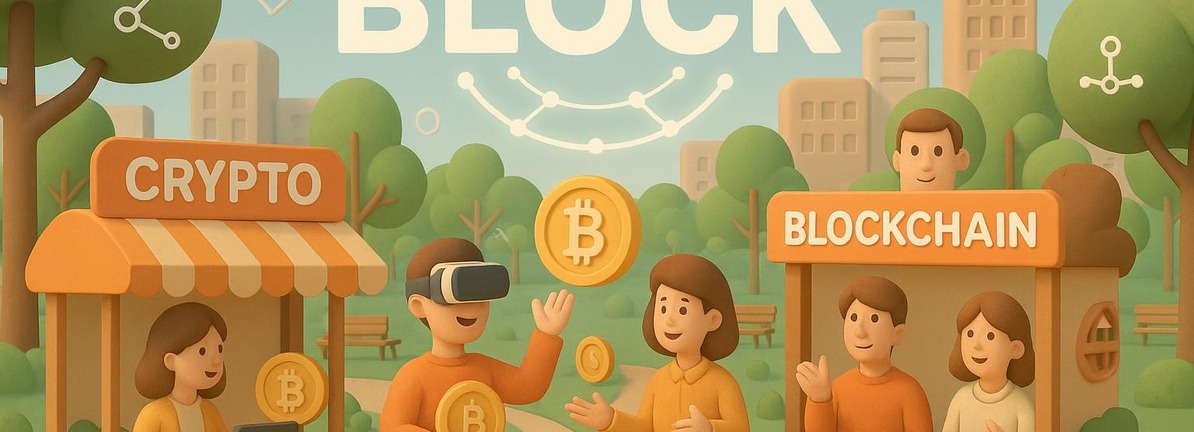While there are lots of great Black Friday sales on cheaper devices, it’s the big ticket items that really make a world of difference. Take Apple’s 2024 Mac mini M4, which has dropped to $499 from $599 as part of early Black Friday deals. The 17…
Author: admin
-

Rock & Roll Hall of Fame induction ceremony Saturday
LOS ANGELES — Outkast, Cyndi Lauper, Salt-N-Pepa and Soundgarden will be among the newly minted members of the Rock & Roll Hall of Fame at Saturday night’s induction ceremony.
Continue Reading
-

A Fundamental ‘Constant’ of the Universe May Not Be Constant At All, Study Finds
Welcome back to the Abstract! Here are the studies this week that took a bite out of life, appealed to the death drive, gave a yellow light to the universe, and produced hitherto unknown levels of cute.
First, it’s the most epic…
Continue Reading
-

Why Analysts See Block’s Growth Story Shifting as New Partnerships and Profit Trends Emerge
Block’s fair value estimate has inched up slightly, with analysts now valuing the stock at $88.51, up from $88.40. This modest increase reflects improving profit expectations amid continued optimism around the company’s growth in payments. Stay tuned to discover how shifting market dynamics shape the evolving narrative for Block and how you can keep up with future updates.
Stay updated as the Fair Value for Block shifts by adding it to your watchlist or portfolio. Alternatively, explore our Community to discover new perspectives on Block.
🐂 Bullish Takeaways
-
Several analysts maintain optimistic outlooks on Block, emphasizing execution and growth momentum. Jefferies raised its price target to $95, highlighting Square’s U.S. share gains as a primary driver and anticipating positive commentary from management on future opportunities.
-
Citi initiated coverage with a Buy rating and a $105 price target, noting Block’s renewed focus on accelerating growth and potential for sustained margin improvement in the mid-term.
-
Wells Fargo began coverage with an Overweight rating and a $91 price target, suggesting untapped opportunities in the payments sector and viewing Block as particularly well positioned despite recent sector-wide challenges.
-
Mizuho raised its price target to $88, citing Square’s improved transaction volumes and lauding its strong recovery, calling Square the “comeback kid of 2025.”
-
UBS maintains a Buy rating and a $95 target, pointing to positive trends within both the Square and Cash App ecosystems, including product-driven volume growth and the potential for upward revenue estimate revisions.
-
Argus raised its price target to $84 after an earnings beat, referencing stronger gross payment volume, improved operating margins, and greater liquidity following S&P 500 index inclusion.
-
Morgan Stanley increased its target to $77, acknowledging Cash App’s resilience and growth on expanded credit products.
🐻 Bearish Takeaways
-
Some analysts express caution, focusing on valuation concerns, near-term execution risks, and recent performance shortfalls. RBC Capital lowered its price target to $90, citing a miss in Square’s gross profit growth driven by higher costs and slower acceleration than expected.
-
Goldman Sachs cut its price target to $82, pointing to a minor Seller GP miss and resulting post-earnings stock volatility but acknowledges Block’s overall growth story remains intact over the longer term.
-
Piper Sandler reduced its target to $55, focusing on an EPS miss and guidance that failed to surpass consensus expectations, which corresponded with notable declines in after-hours trading.
-
Truist remains cautious despite incrementally raising its price target to $74, warning that tougher year-over-year comparisons and sector selectivity could impact future results.
-
BNP Paribas downgraded Block to Hold with an $86 target, signaling growing wariness despite previous optimism.
Continue Reading
-
-

Duffer Brothers reacts to Millie Bobby Brown, David Harbour bullying claims at 'Stranger Things' premiere – ANI News
- Duffer Brothers reacts to Millie Bobby Brown, David Harbour bullying claims at ‘Stranger Things’ premiere ANI News
- How the ‘Stranger Things’ Premiere Also Worked as Damage Control for Star David Harbour Variety
- ‘Millie Bobby Brown filed a…
Continue Reading
-

A Look at monday.com (MNDY) Valuation Following Strong Q1 Revenue and Upbeat Guidance
monday.com (MNDY) just released its latest earnings, showcasing revenue growth of 27% and outpacing expectations on important financial measures. Management sounded upbeat about scaling efficiently and maintaining momentum.
See our latest analysis for monday.com.
Despite these upbeat results, momentum has been hard to hold onto. monday.com’s share price delivered a 1-day gain of 4.7%, but is still down 17.9% year-to-date. Over the past year, the total shareholder return sits at a steep -41.5%, reflecting a sharp pullback from recent highs. Long-term holders are still up nearly 100% over three years. The stock’s recent moves signal investors are weighing short-term uncertainty against the company’s longer-term growth story.
If you want to discover more tech names with breakout potential and innovative business models, now’s your chance to check out See the full list for free.
With shares trading well below analyst targets despite robust financials and upbeat management commentary, investors are left to wonder: is monday.com undervalued at current levels, or is the market already factoring in future growth?
monday.com’s fair value, according to the most widely followed narrative, lands significantly above its latest close. This outlook sees major catalysts on the horizon, setting up an intriguing argument for upside if the story unfolds as projected.
Ongoing global shift toward digital transformation, remote/hybrid work, and rising SaaS adoption continues fueling strong demand for cloud-based productivity and collaboration platforms like monday.com, supporting high double-digit revenue growth and future ARR expansion.
Read the complete narrative.
Want to unravel what powers this lofty target? There is a bold recipe driving these numbers: think rapid expansion and a turnaround in profit margins. The secret is in how recurring revenue and margin improvement factor into the forecast. What assumptions does the narrative make about the speed and scale of future growth? See the key numbers and logic for yourself.
Result: Fair Value of $266.33 (UNDERVALUED)
Have a read of the narrative in full and understand what’s behind the forecasts.
However, accelerating competition and slower customer additions could challenge monday.com’s ability to maintain its projected high growth and margin improvements in the future.
Find out about the key risks to this monday.com narrative.
Looking at price-to-sales, monday.com trades at 8.9x, which is noticeably steeper than the US Software sector average of 4.8x and its peer group at 8.5x. While the company’s growth prospects could justify a premium, the current multiple stands below the fair ratio of 11.9x. This may imply room for the stock to re-rate if market sentiment turns more positive. However, these multiples could also signal vulnerability if growth expectations fall short.
Continue Reading
-

Evaluating Somnigroup International (SGI) Shares After Recent Gains and Near-Record Valuation
Somnigroup International (SGI) has been attracting attention as its shares climbed 3% today, continuing strong gains from the past month. Investors are watching closely as ongoing shifts occur in the consumer durables space.
See our latest analysis for Somnigroup International.
After a year of strong momentum, Somnigroup International’s 1-year total shareholder return now stands at 69.2%, with a share price last closing at $91.25. That is on top of an impressive 308% total return over the past five years. With recent buying pressure and upbeat sentiment in consumer durables, it appears that investors are increasingly pricing in growth potential and improved fundamentals for SGI.
If you’re looking to spot other fast-moving opportunities, this could be the moment to branch out and discover fast growing stocks with high insider ownership
Yet with shares near record highs and analyst targets not far ahead, the big question for investors is whether Somnigroup remains undervalued or if the stock’s recent jump simply reflects confidence in future growth prospects.
Somnigroup International’s most followed narrative places fair value at $88.38 per share, just below the recent closing price of $91.25. This narrow gap places the spotlight on ambitious long-term growth assumptions that drive the valuation debate.
The integration of Mattress Firm is already generating meaningful sales and cost synergies, with $100 million in annual net cost synergies projected and sales synergies ahead of schedule. These operational improvements are set to expand EBITDA and enhance net margins moving into 2026 and beyond.
Read the complete narrative.
Curious what powers this bullish price target? One component of the narrative combines a bold leap in profit margins with aggressive revenue expansion and a future valuation multiple that most companies in the sector can only dream about. Want to see what all these fast-moving financial assumptions add up to? The answers might surprise you.
Result: Fair Value of $88.38 (OVERVALUED)
Have a read of the narrative in full and understand what’s behind the forecasts.
However, persistent input cost pressures and shifting consumer preferences could challenge Somnigroup International’s projected growth and margin improvement. This may keep the outlook uncertain.
Find out about the key risks to this Somnigroup International narrative.
If you think there is more to the story, or prefer drawing your own conclusions from the data, it only takes a few minutes to create your own perspective with Do it your way
Continue Reading
-
Major retailers promise a cheaper Thanksgiving, but there's a twist – Reuters
- Major retailers promise a cheaper Thanksgiving, but there’s a twist Reuters
- Target hopes to stop alarming customer behavior with bold offer TheStreet
- Thanksgiving deals to be thankful for — the best Thanksgiving dinner deals ConsumerAffairs
- Thanksgiving on a Budget: Delicious Walmart, Aldi & Lidl Finds Under $15 Yahoo
- Stop & Shop offers Thanksgiving dinner deal under $40 for 10 people bluebookservices.com
Continue Reading
-

‘Confidence is high’ – Antonelli energised by ‘very fun’ P2 finish in Sao Paulo Sprint
Kimi Antonelli has admitted that “confidence is high” at Mercedes despite the competitive nature of the field, after he was able to challenge Lando Norris during the Sprint at Interlagos and secure a P2 finish.
The 19-year-old missed out on…
Continue Reading
-

KELLY WEARSTLER INVITES ARTISTS INTO HER POOL HOUSE WITH SIDE HUSTLE
Part salon, part retail experiment, Side Hustle extends from Wearstler’s own collecting practice, which she calls Collected Finds. The idea is to give artists, musicians, designers, and other creatives a place to test ideas, whether in art,…
Continue Reading
